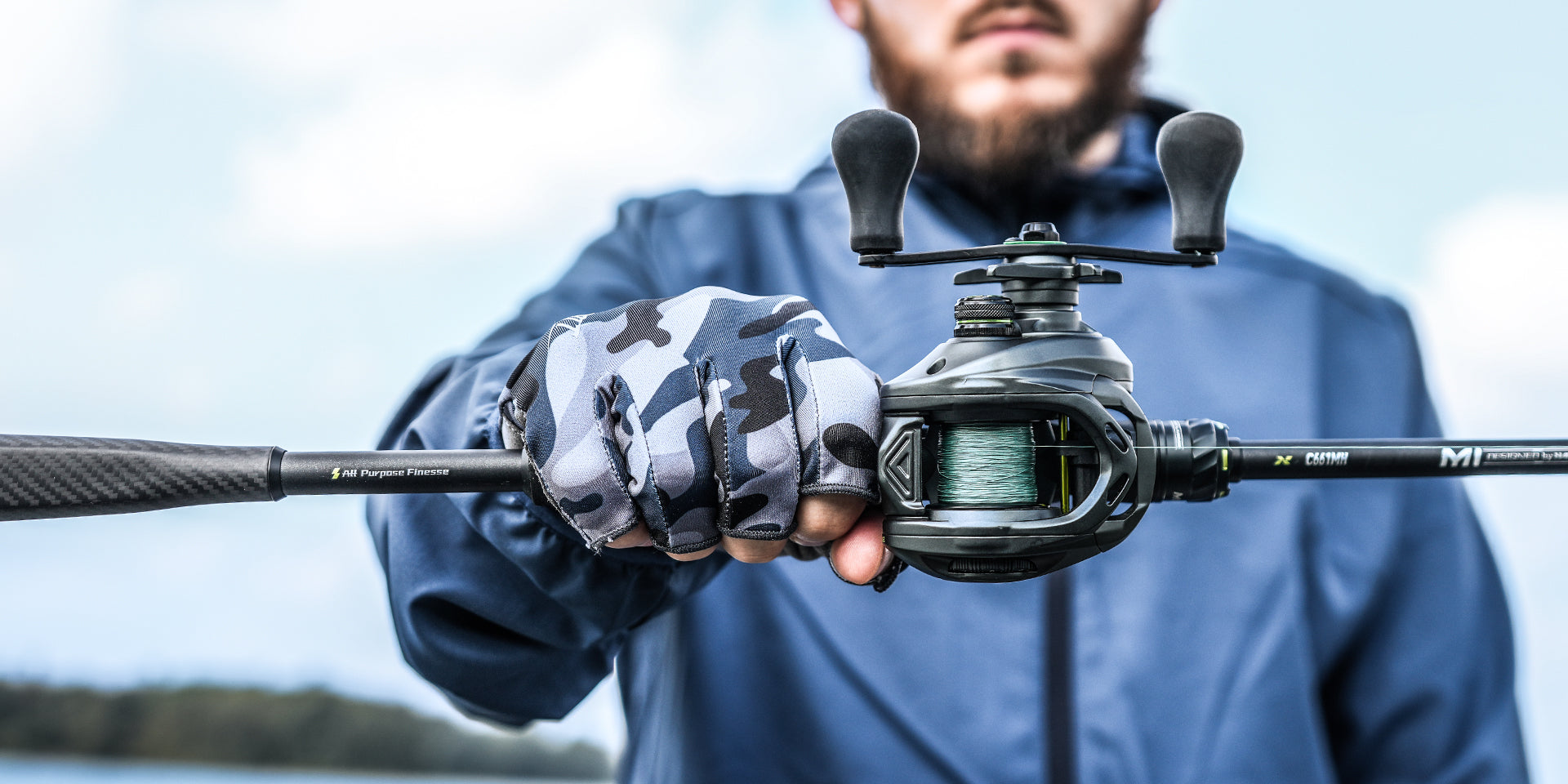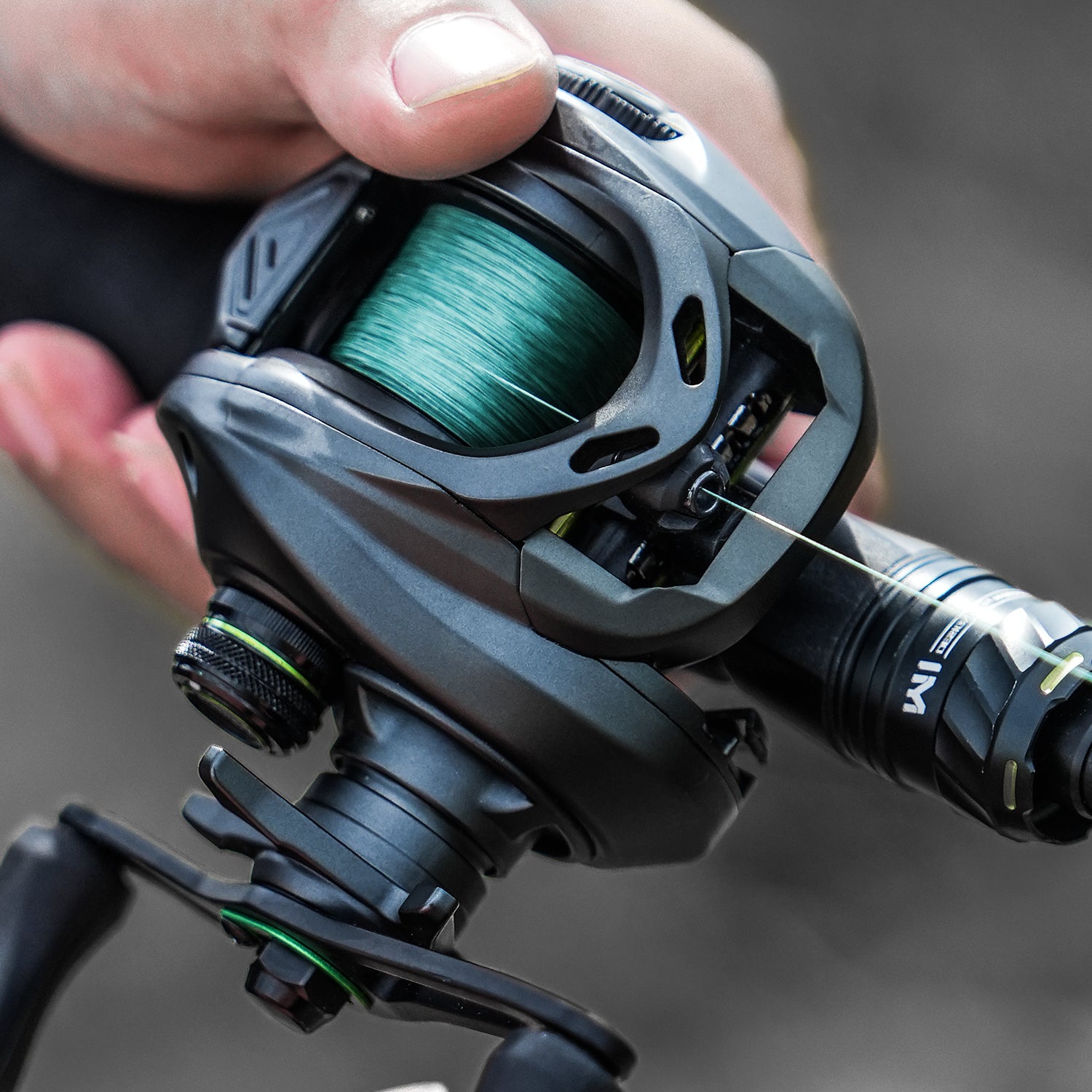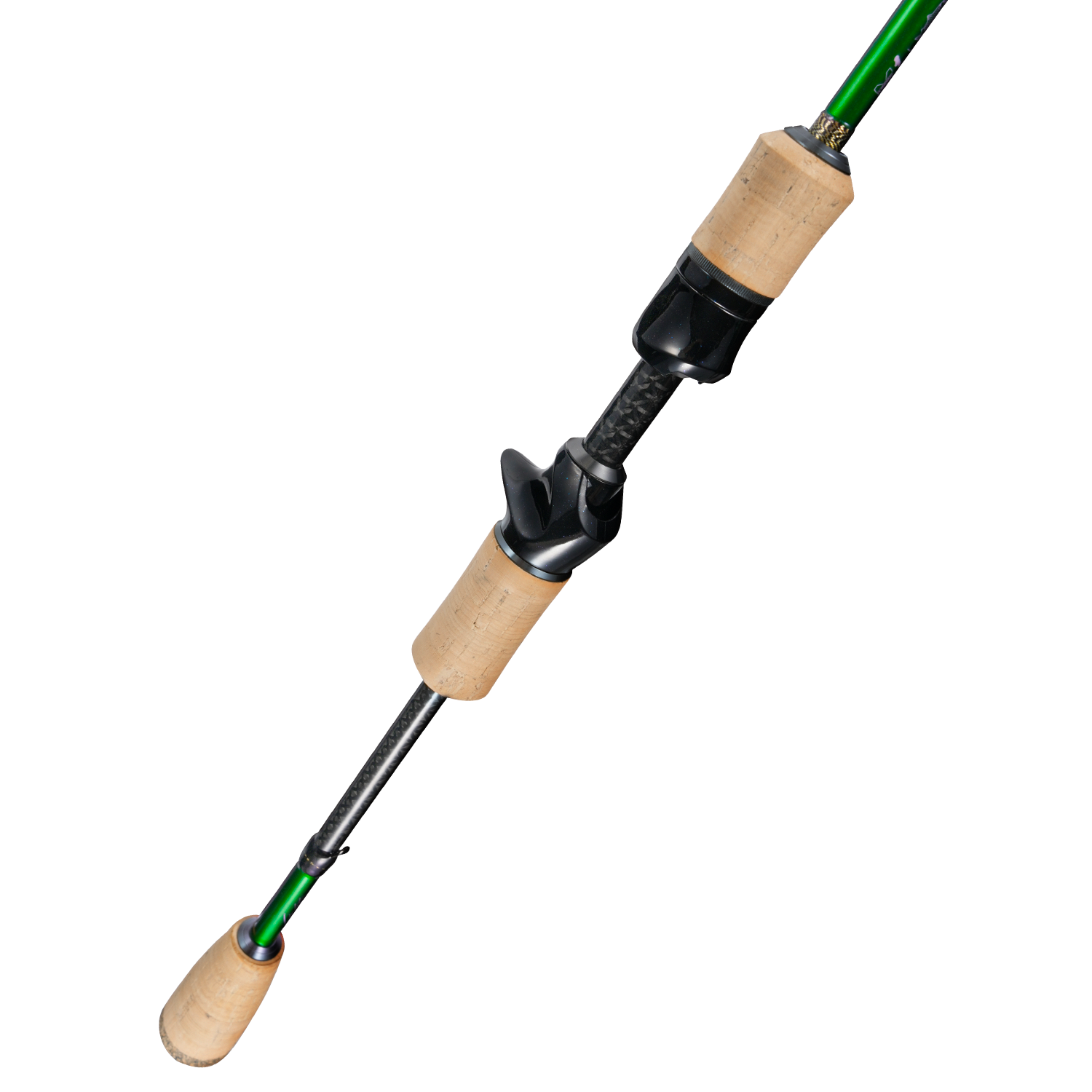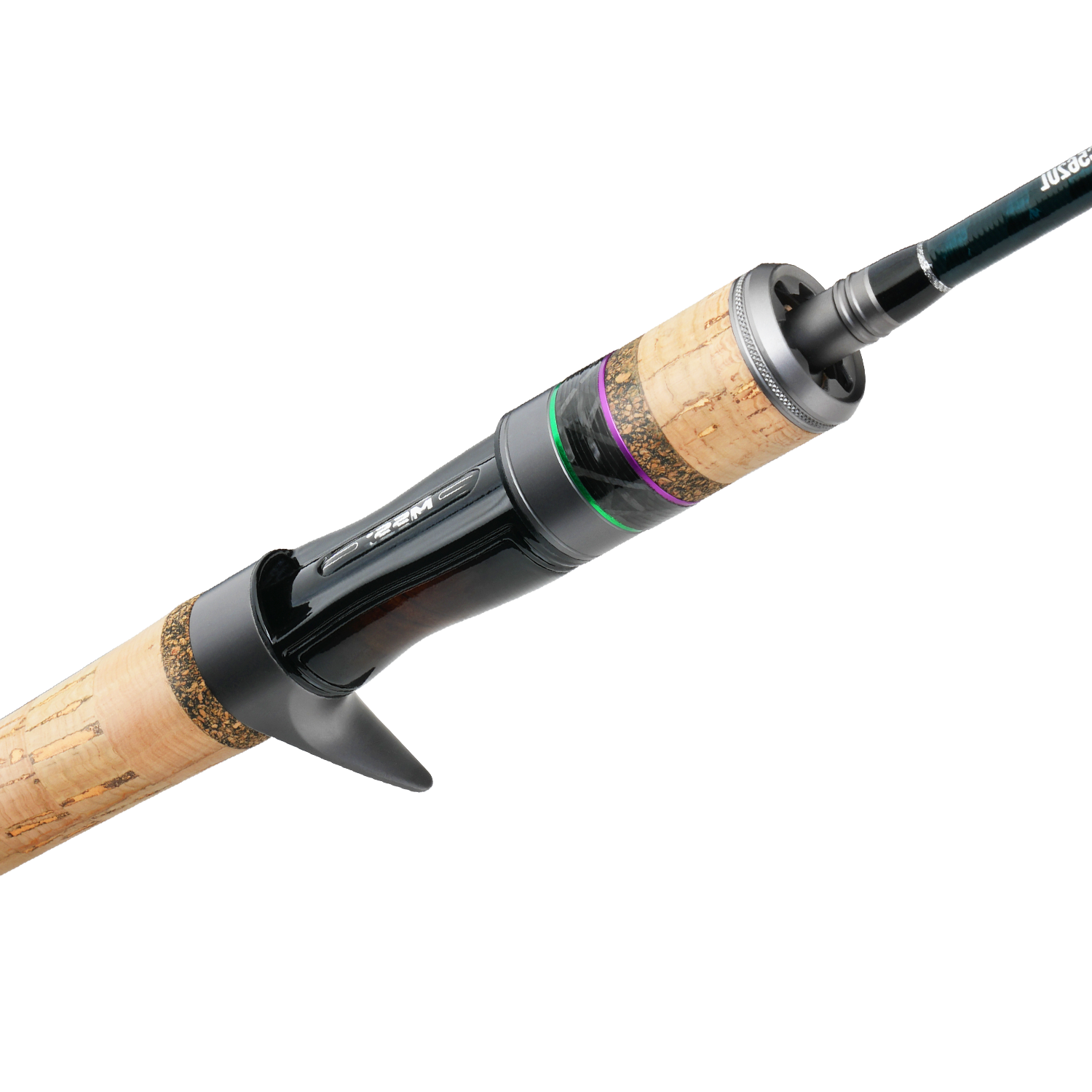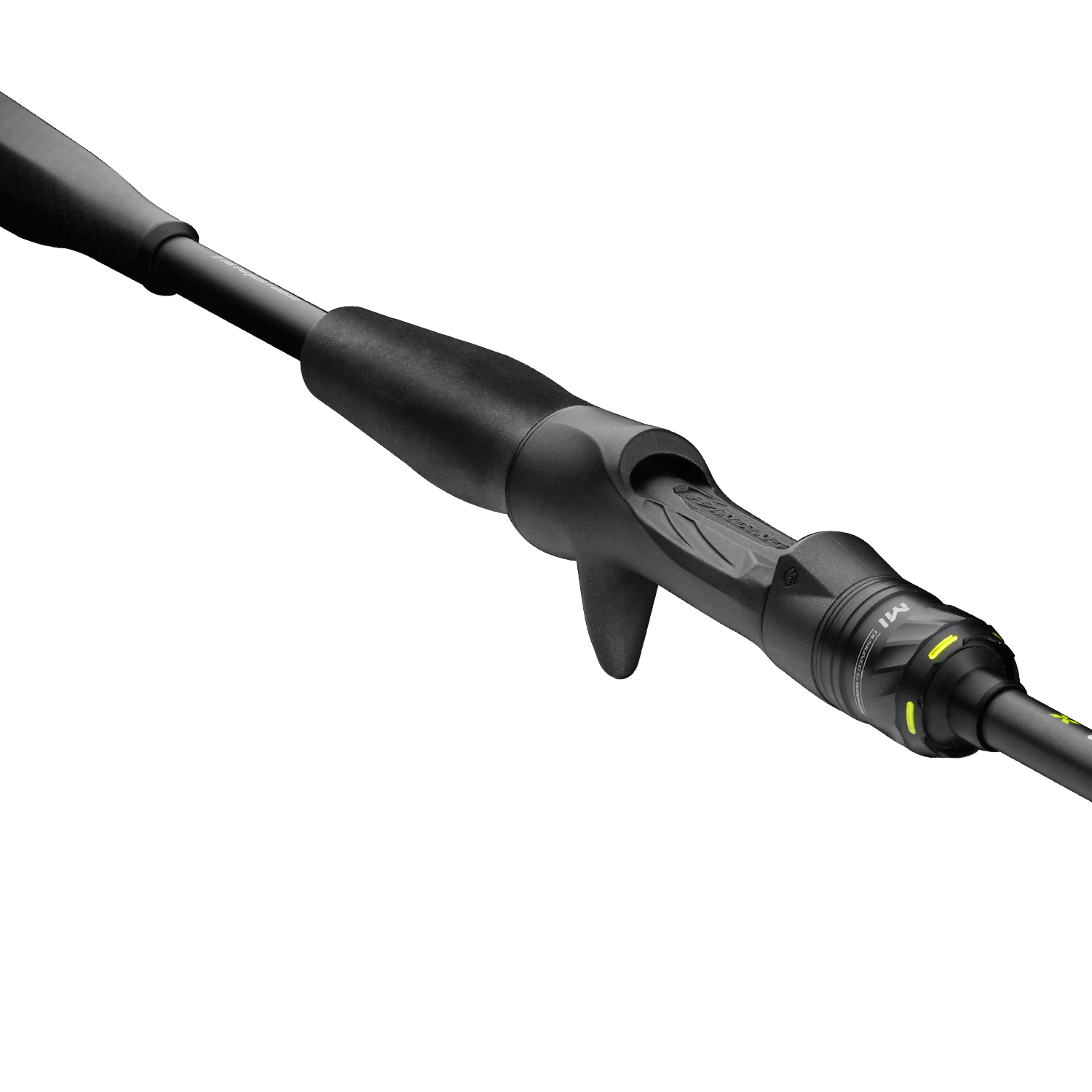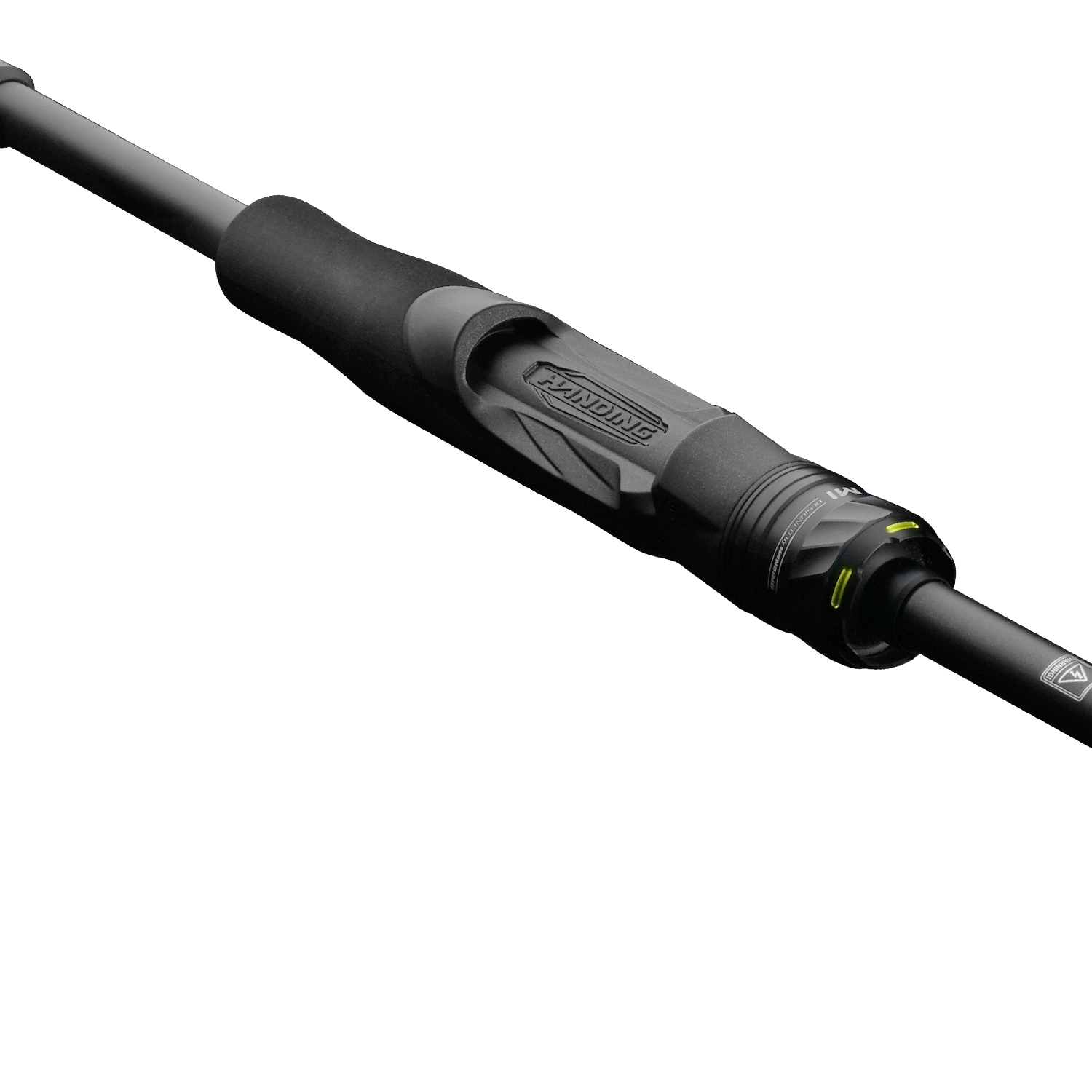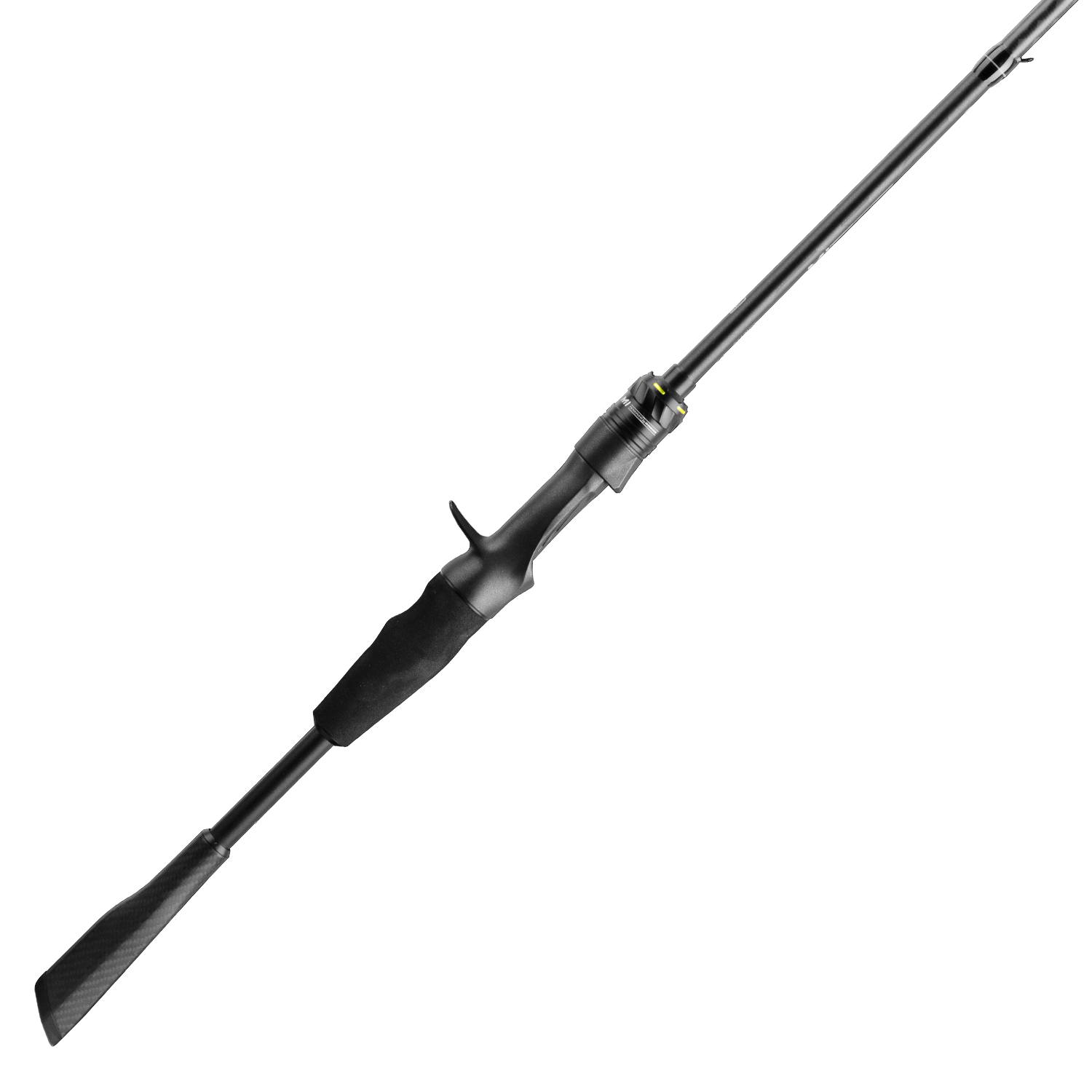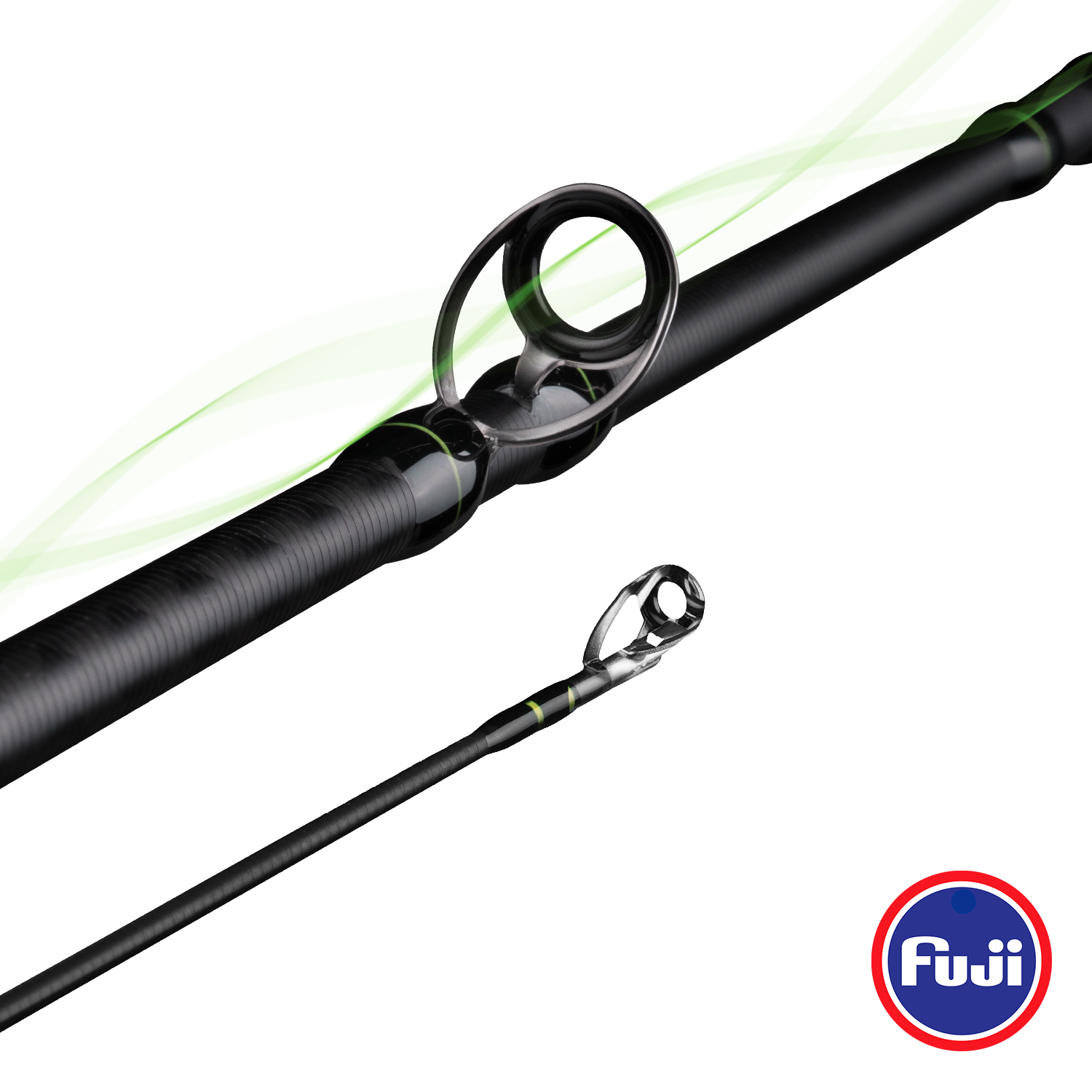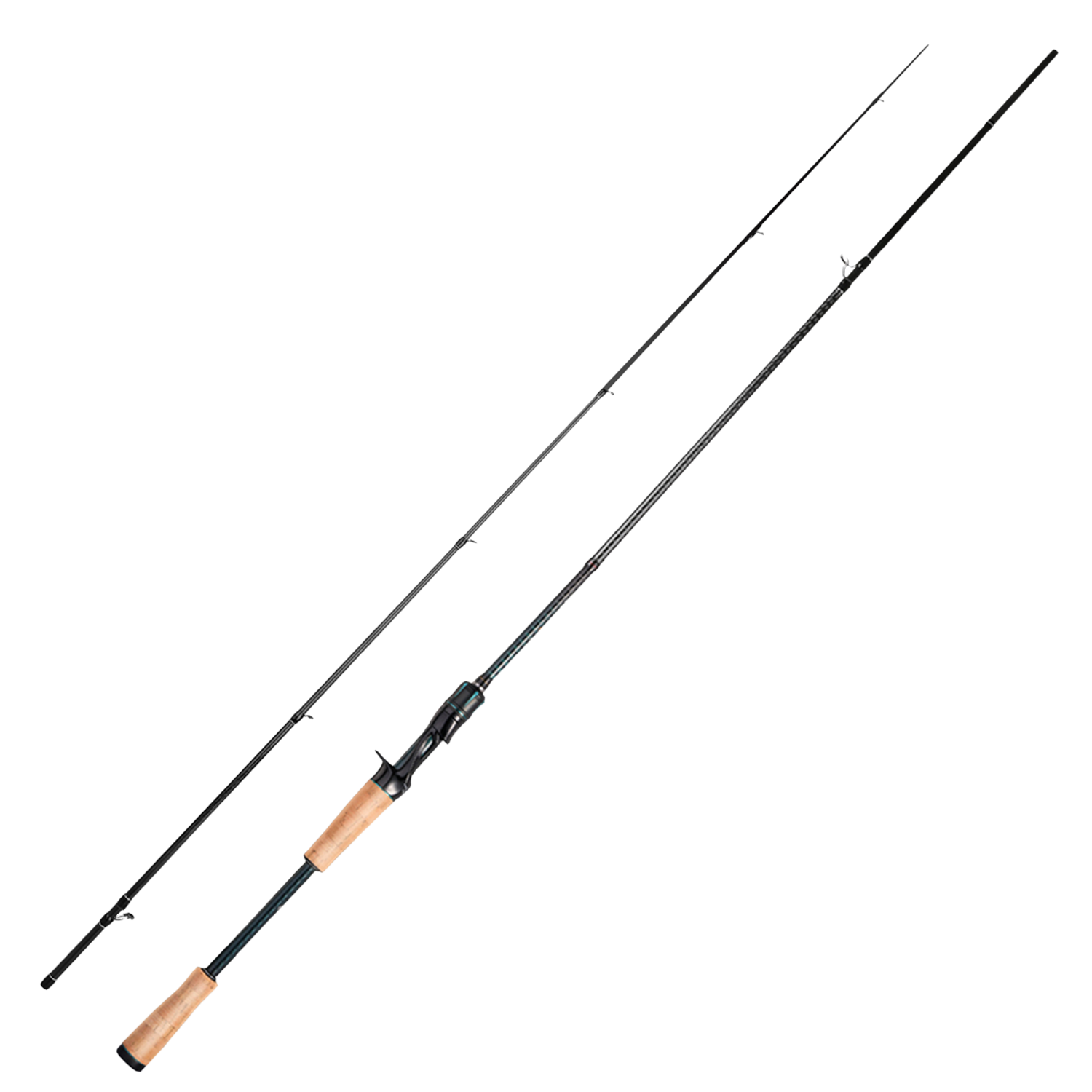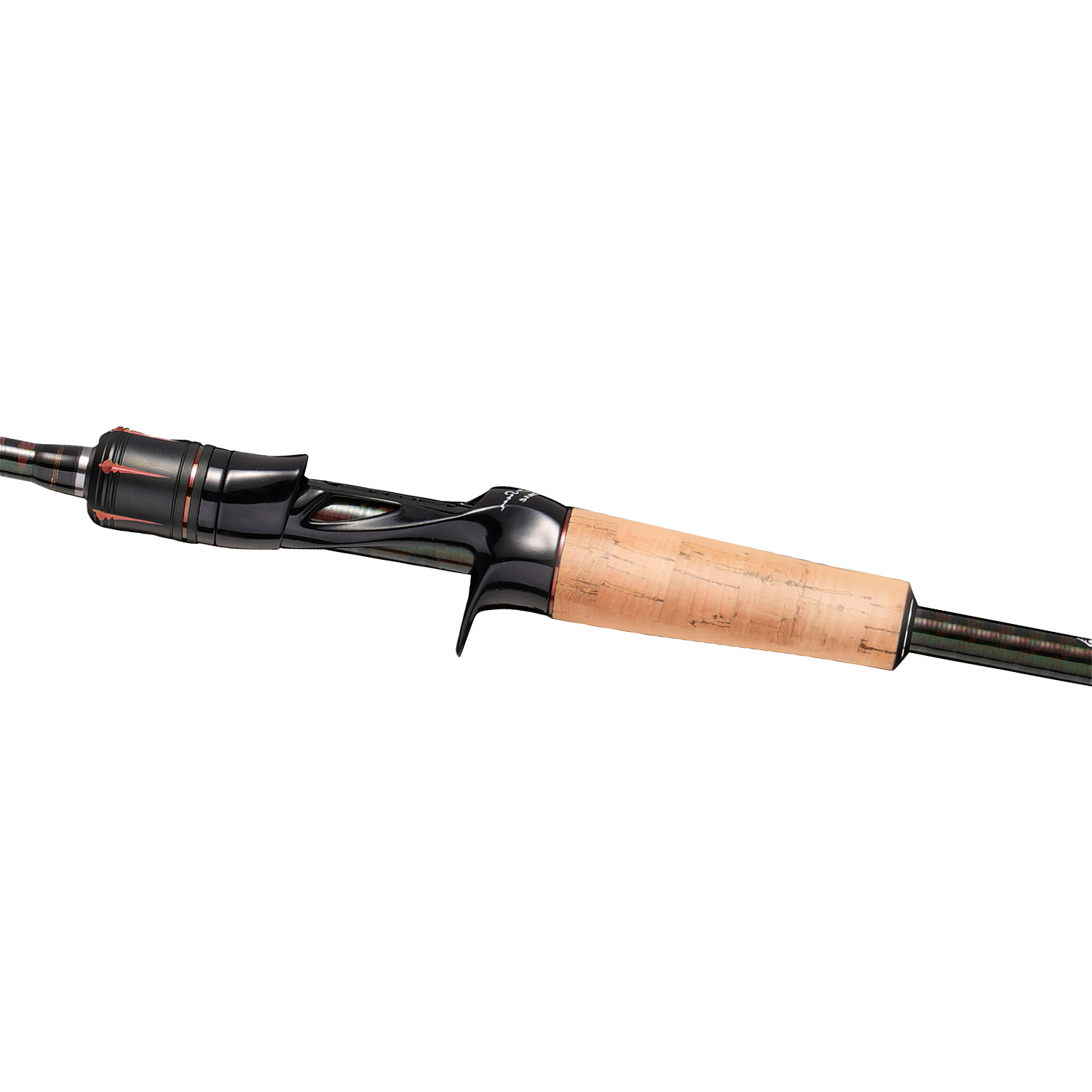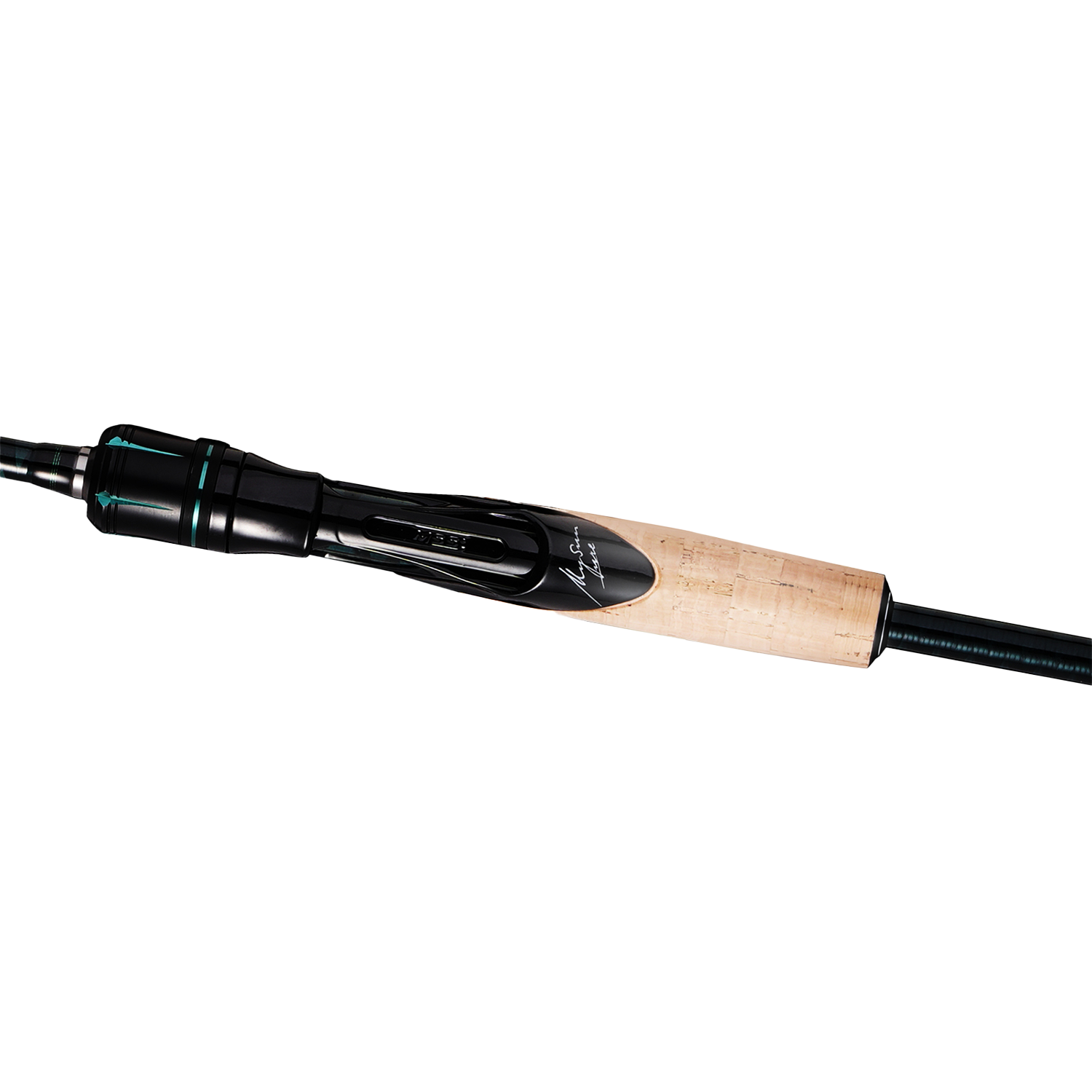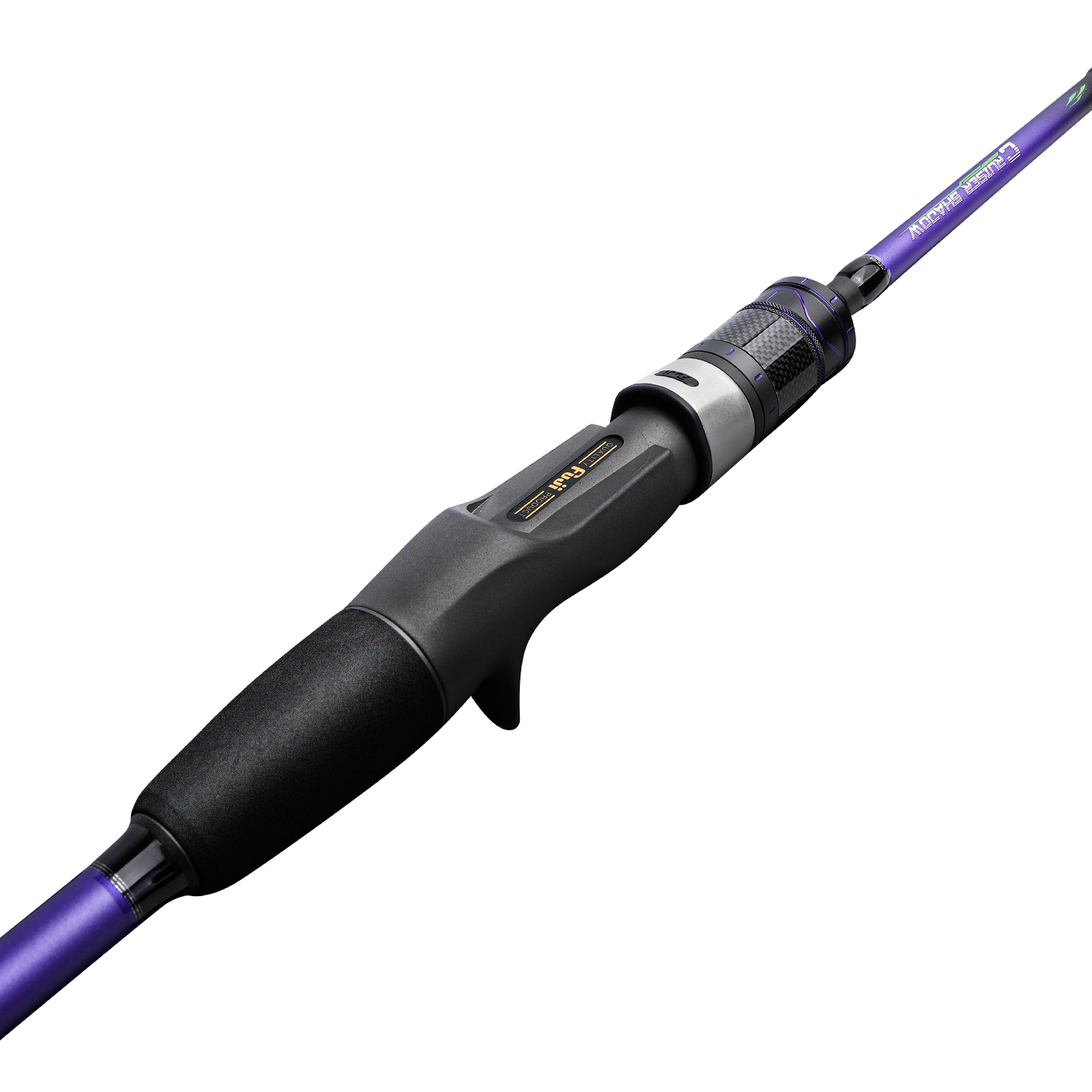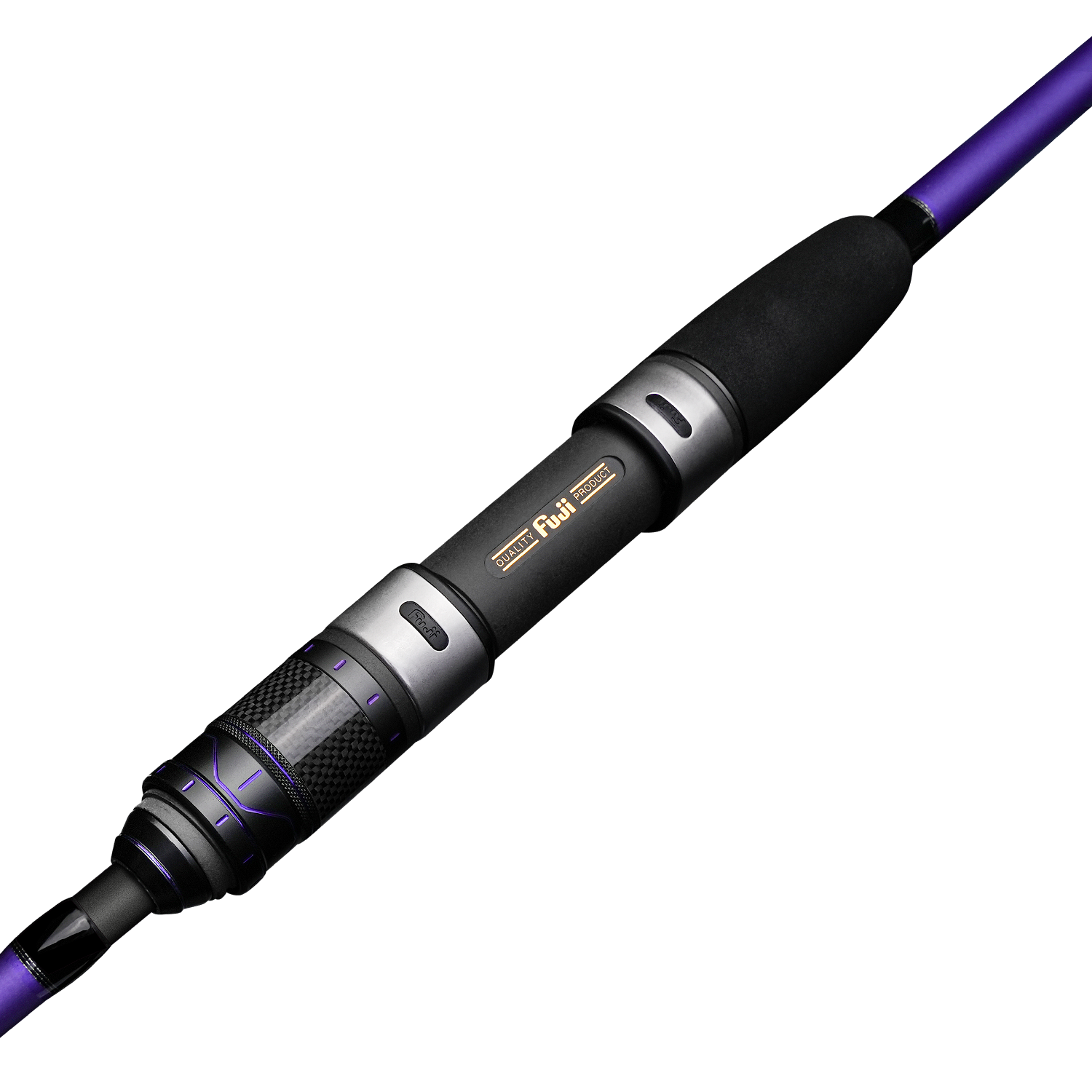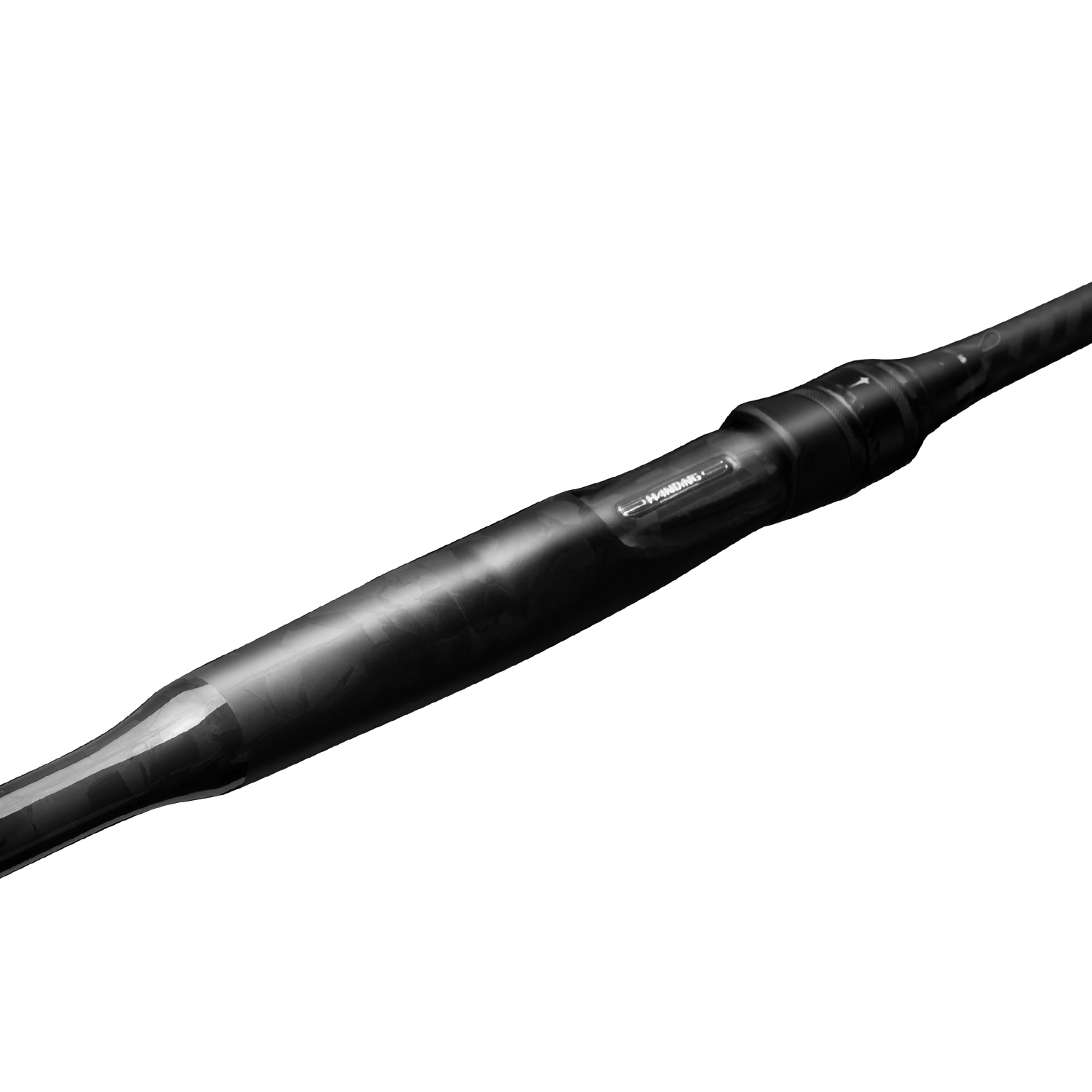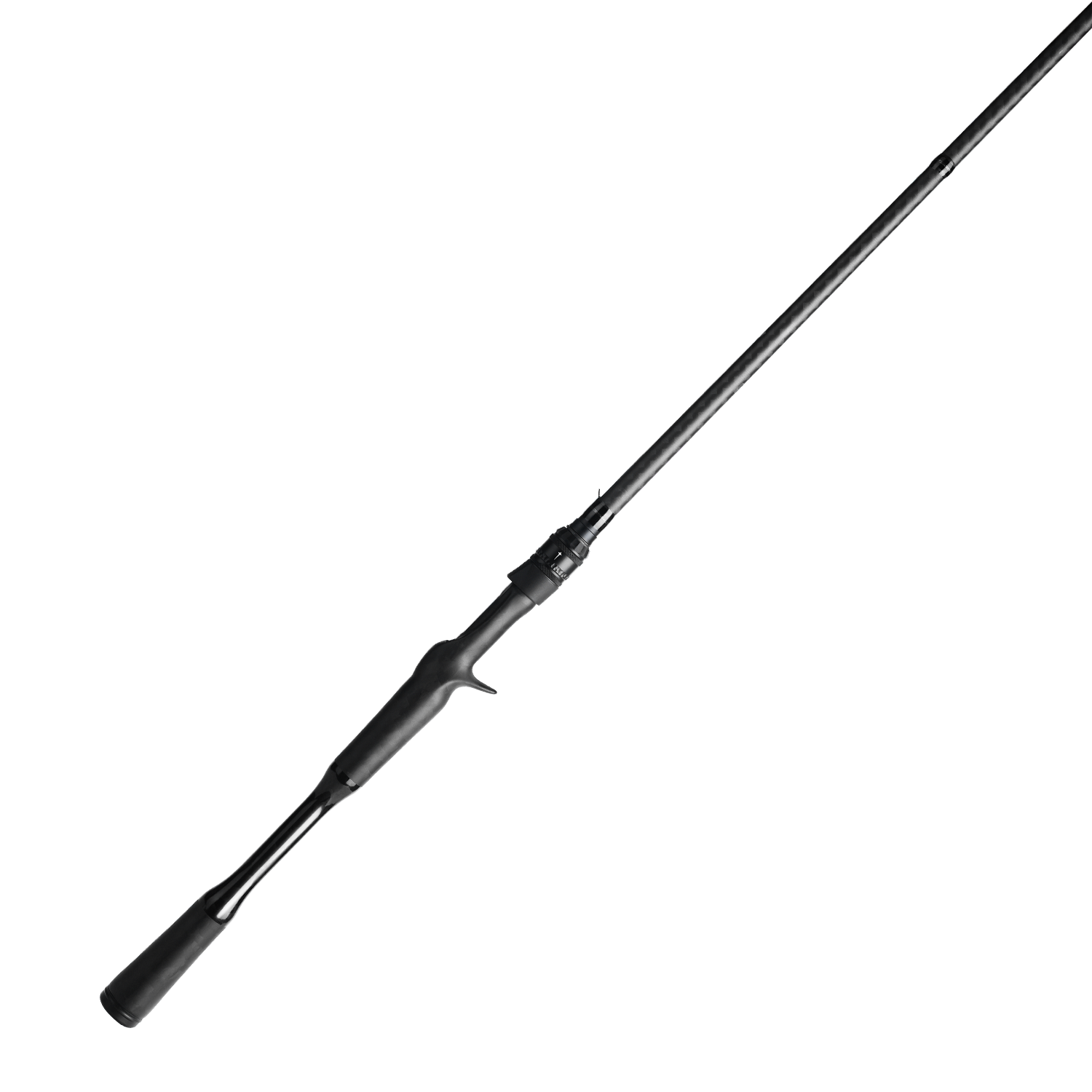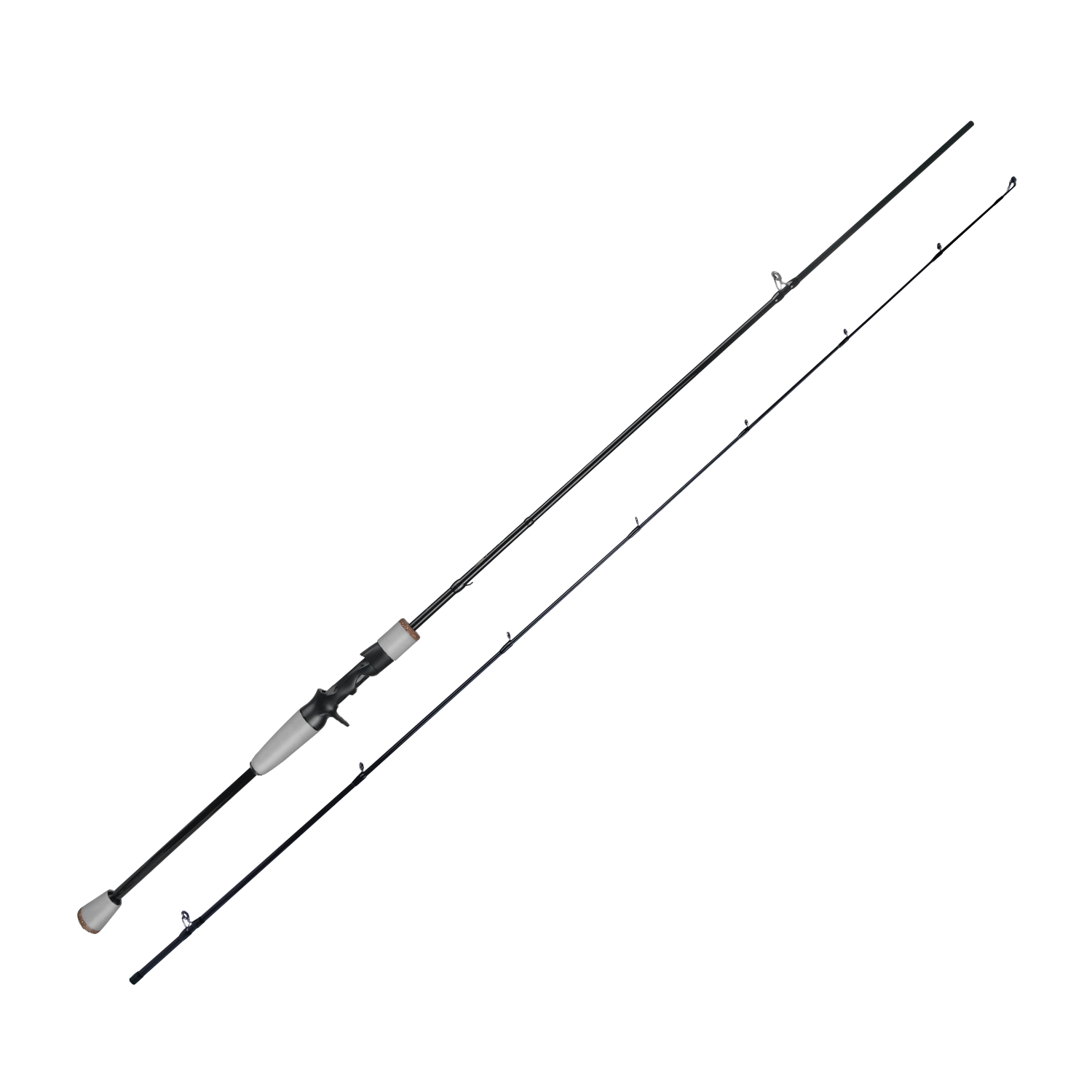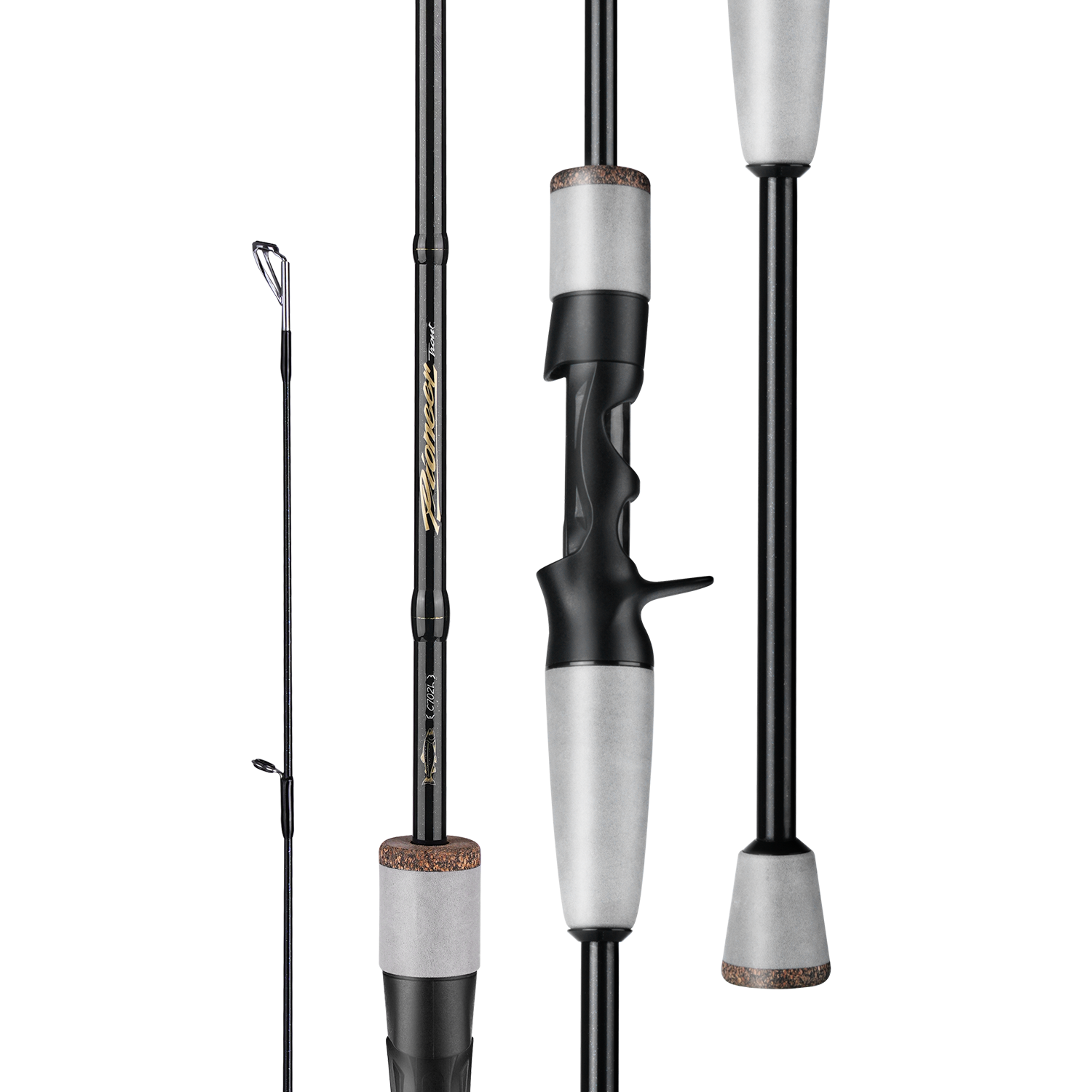How to choose fishing rods that suit me?
What's the difference between spinning and baitcasting rods?
How does rod effect fishing?
What type of rod should I choose for different fish?
What Is the Ideal Length of the Freshwater Fishing Rods for My Needs?
Shipping, Return and Warranty
FAQ
Here you can get to know how to choose HANDING fishing reels, if you have more question please contact service@handingfishing.com, we are aways here to help you choose your ideal product.
How to choose fishing rods that suit me?
Choosing a fishing rod that suits you involves considering several factors, including the type of fishing you plan to do, your level of experience, and personal preferences. Here are some steps to guide you in selecting the right fishing rod:
Determine the Type of Fishing
Freshwater or Saltwater: Decide if you'll be fishing in freshwater (lakes, rivers, streams) or saltwater (ocean, sea). Saltwater rods are typically more robust to withstand corrosion.
Type of Fish: Consider the species you want to catch. Larger fish require stronger rods.
Choose the Right Rod Type
Spinning Rods: Good for beginners, versatile, and easy to use. Suitable for lightweight to medium-heavy lures.
Baitcasting Rods: Offer more control and precision, ideal for experienced anglers targeting larger fish.
Select the Rod Length
Short Rods (6 feet or less): Provide better control, suitable for close-quarters fishing and heavy cover.
Medium Rods (6 to 7 feet): Versatile and good for general use.
Long Rods (7 feet and up): Allow longer casting distances, good for open water fishing.
Consider Power and Action
Power: Refers to the rod's strength or lifting power. Categories range from ultra-light to heavy.
- Ultra-Light: Small fish, light lures.
- Light: Smaller fish, lightweight lures.
- Medium: Versatile, suitable for a variety of fish sizes.
- Heavy: Larger fish, heavier lures.
Action: Describes how much of the rod bends when pressure is applied to the tip.
- Fast Action: Bends at the tip, provides sensitivity and quick hook sets.
- Medium Action: Bends in the top half, good for a variety of techniques.
- Slow Action: Bends throughout the rod, best for smaller fish and light lures.
Material of the Rod
Graphite: Lightweight, sensitive, and stiff. Good for detecting bites.
Fiberglass: More durable and flexible, suitable for larger fish.
Composite: A mix of graphite and fiberglass, offering a balance of sensitivity and durability.
Handle Material and Length
Carbon Fiber: HANDING is the first on that use carbon fiber as handle material, that provide lightweight and balance performance.
Cork: Comfortable and provides a good grip but can be more expensive.
EVA Foam: Durable and resistant to wear, often used for saltwater rods.
Handle Length: Longer handles allow for two-handed casting and better leverage for fighting larger fish, while shorter handles are good for one-handed casting and lighter fish.
Budget
Budget: Determine how much you're willing to spend. Higher-end rods offer better materials and craftsmanship, but even budget rods can be effective.
Get Expert Advice
Consult with local fishing tackle shops, join online forums, or ask experienced anglers for recommendations based on your specific needs and local fishing conditions.
Or contact our Handing Service Team( email us at service@handingfishing.com) to get suggestions when choosing our rods.
What's the difference between spinning and baitcasting rods?
The main differences between spinning and baitcasting rods lie in their design, usage, and the type of reel they accommodate. Here are the key distinctions:
Spinning Rods
Reel Position and Mounting:
- The reel mounts underneath the rod.
- Guides (eyelets) are larger at the butt of the rod to accommodate the line coming off the spinning reel spool in large loops.
Ease of Use:
- Generally considered easier to use, making them suitable for beginners.
- Less prone to backlash (tangling of the fishing line) because the line comes off the fixed spool reel smoothly.
Casting Technique:
- Casting is straightforward; you open the bail, hold the line with your finger, and release it as you cast.
- Effective for light lures and baits due to the smooth line release.
Applications:
- Ideal for light to medium tackle.
- Commonly used for various types of fishing, including freshwater and light saltwater fishing.
Versatility:
- Can handle a wide range of fishing techniques and environments.
Baitcasting Rods
Reel Position and Mounting:
- The reel mounts on top of the rod.
- Guides are smaller and placed closer to the rod blank because the line comes off the spool directly inline with the rod guides.
Precision and Control:
- Offers greater control and precision over casting distance and lure placement.
- More challenging to master, often preferred by experienced anglers.
Casting Technique:
- Requires a thumb on the spool to control the release of the line and prevent backlash.
- Better suited for heavier lures and baits due to the spool's direct connection to the rod guides.
Applications:
- Ideal for medium to heavy tackle.
- Commonly used for bass fishing and targeting larger species, especially in freshwater and saltwater environments.
Power and Performance:
- Typically provides better power and leverage for fighting larger fish.
- Often used in situations requiring precise casting and heavy cover.
Summary
Spinning Rods:
- Reel mounts underneath.
- Easier to use, suitable for beginners.
- Good for light to medium tackle.
- Versatile for various fishing types and environments.
Baitcasting Rods:
- Reel mounts on top.
- Greater casting precision and control, preferred by experienced anglers.
- Suitable for medium to heavy tackle.
- Often used for bass fishing and larger species in freshwater and saltwater.
Choosing between a spinning rod and a baitcasting rod depends on your experience level, the type of fishing you plan to do, and your personal preference for casting and handling techniques.
How does rod effect fishing?
The fishing rod you choose can significantly impact your fishing experience and success. Here's how different aspects of the rod affect various aspects of fishing:
Rod Length
Casting Distance: Longer rods can cast further because they provide more leverage, which is useful in open water fishing. Shorter rods offer better accuracy and control, making them suitable for fishing in tight spaces or heavy cover.
Leverage and Hook Setting: Longer rods give you more leverage, making it easier to set the hook and control larger fish. Shorter rods are better for quick, powerful hook sets at close range.
Rod Power
Strength and Lure Weight: The power of a rod (ultra-light, light, medium, medium-heavy, heavy) determines its strength and the weight of lures it can handle. Light rods are for small fish and light lures, while heavy rods are for larger fish and heavy lures.
Fish Fighting: Rod power affects your ability to fight fish. A rod that matches the size of the fish you are targeting provides better control and reduces the risk of the rod breaking.
Rod Action
Bend and Sensitivity: Rod action (fast, medium, slow) describes where the rod bends. Fast action rods bend at the tip, offering high sensitivity and quick hook sets. Slow action rods bend throughout the rod, providing more give and cushioning for lighter lines and smaller fish.
Casting Accuracy: Fast action rods provide more accurate casting and are good for single hook lures. Slow action rods are better for casting lighter baits and can improve casting distance for certain techniques.
Rod Material
Sensitivity and Durability: Rods made from graphite or are lightweight and sensitive, allowing you to detect subtle bites. Fiberglass rods are more durable and flexible, making them suitable for larger fish and heavy cover. Composite rods offer a balance between sensitivity and durability.
Weight: Graphite rods are lighter and can be used for extended periods without causing fatigue. Heavier rods (often fiberglass) can be tiring to use but are more robust.
Rod Guides
Line Management: The quality and number of guides (eyelets) affect line friction and casting smoothness. More and higher quality guides distribute stress better and improve casting distance and accuracy.
Durability: Good quality guides made from materials like ceramic or stainless steel reduce wear and tear on the fishing line.
Handle and Grip
Comfort and Control: The handle material (cork, EVA foam) and length affect comfort and grip. Longer handles allow for two-handed casting and better leverage for fighting fish. Shorter handles are lighter and easier to use for quick, one-handed casting.
Fishing Style: The handle's design should match your fishing style, whether you need a firm grip for fighting large fish or comfort for long casting sessions.
Rod Flexibility
Versatility: Flexible rods are more versatile, handling a range of fish sizes and techniques. Stiffer rods are specialized for specific types of fishing and techniques, providing more power and precision.
Choosing the right fishing rod involves balancing these factors to match your fishing style, target species, and personal preferences. A well-suited rod enhances casting accuracy, distance, and control, making your fishing experience more enjoyable and successful.
What type of rod should I choose for different fish?
Choosing the right rod for different types of fish depends on factors such as the size and behavior of the fish, the fishing environment, and the techniques you plan to use. Here’s a guide to help you select the appropriate rod for various fish species:
Small Fish (Panfish, Trout, Small Bass)
Rod Type: Spinning Rod
Length: 5 to 7 feet
Power: Ultra-light to Light
Action: Fast or Moderate
Material: Graphite or Composite
Medium Fish (Bass, Walleye, Pike, Catfish)
Rod Type: Spinning or Baitcasting Rod
Length: 6 to 7.5 feet
Power: Medium to Medium-Heavy
Action: Fast or Medium-Fast
Material: Graphite or Composite
Large Fish (Salmon, Steelhead, Large Catfish)
Rod Type: Spinning or Baitcasting Rod
Length: 7 to 9 feet
Power: Medium-Heavy to Heavy
Action: Fast or Moderate-Fast
Material: Composite or Fiberglass
Very Large Fish (Musky, Large Pike, Large Saltwater Fish)
Rod Type: Baitcasting or Conventional Rod
Length: 7 to 10 feet
Power: Heavy to Extra-Heavy
Action: Fast
Material: Composite or Fiberglass
Specific Recommendations:
For Panfish:
Rod Type: Spinning
Example: 5-6 foot ultra-light power, fast action rod.
For Bass:
Rod Type: Spinning or Baitcasting
Example: 6.5-7 foot medium power, fast action rod.
For Catfish:
Rod Type: Spinning or Baitcasting
Example: 7-8 foot medium-heavy power, moderate action rod.
For Pike/Musky:
Rod Type: Baitcasting
Example: 7.5-9 foot heavy power, fast action rod.
For Inshore Saltwater Fish (Redfish, Snook):
Rod Type: Spinning or Baitcasting
Example: 7-8 foot medium-heavy power, fast action rod.
For Offshore Saltwater Fish (Tuna, Marlin):
Rod Type: Conventional or Trolling
Example: 6-7 foot heavy power, fast action rod.
The right fishing rod for you depends on the specific species you’re targeting and the environment you’re fishing in. Smaller fish require lighter, more sensitive rods, while larger fish need stronger, more robust rods. Always consider the power, action, length, and material of the rod to match the fishing conditions and techniques you plan to use.
What is the ideal length of freshwater fishing rods for my needs?
Choosing the ideal length of a freshwater fishing rod depends on several factors, including the type of fishing you plan to do, the environment, and the species you're targeting. Here’s a guide to help you determine the best rod length for your needs:
Factors to Consider:
Fishing Environment
- Small Streams and Ponds: Shorter rods (5 to 6 feet) are better for tight spaces with lots of cover, as they provide better control and accuracy in casting.
- Larger Lakes and Rivers: Longer rods (6.5 to 8 feet) are suitable for open water, offering longer casting distances and better leverage when fighting fish.
Target Species
- Small Fish (Panfish, Trout): Shorter rods (5 to 6.5 feet) work well, providing sensitivity and control.
- Medium Fish (Bass, Walleye): Medium-length rods (6.5 to 7.5 feet) offer a balance between casting distance and control.
- Large Fish (Pike, Catfish): Longer rods (7 to 8 feet) provide the necessary leverage and power to handle bigger fish.
Fishing Techniques
- Casting Accuracy: Shorter rods are better for precise casting, especially in confined areas.
- Casting Distance: Longer rods can cast further, which is beneficial in open water.
Lure and Bait Type:
- Light Lures/Baits: Short to medium rods (5.5 to 7 feet) offer better control and sensitivity.
- Heavy Lures/Baits: Medium to long rods (6.5 to 8 feet) provide the power needed to cast heavier lures and handle larger fish.
Specific Recommendations:
For Panfish and Trout (Small Fish):
Rod Length: 5 to 6.5 feet
Benefits: Enhanced control and sensitivity for light lures and small fish in smaller bodies of water.
For Bass and Walleye (Medium Fish):
Rod Length: 6.5 to 7.5 feet
Benefits: Versatility in casting distance and control, suitable for a variety of fishing environments and techniques.
For Pike and Catfish (Large Fish):
Rod Length: 7 to 8 feet
Benefits: Greater casting distance and leverage, necessary for handling larger fish in larger bodies of water.
Example Scenarios:
Fishing in a Small Stream for Trout:
- Rod Length: 5 to 6 feet
- Reason: Shorter rods allow for better maneuverability and precise casting in tight spaces.
Fishing in a Large Lake for Bass:
- Rod Length: 6.5 to 7 feet
- Reason: Medium-length rod provides a good balance of casting distance and control, ideal for targeting bass with various lures.
Fishing in a River for Catfish:
- Rod Length: 7.5 to 8 feet
- Reason: Longer rods offer the power and leverage needed to cast heavy baits and handle strong, large fish.
Choosing the right length for your freshwater fishing rod depends on your specific fishing environment, target species, and preferred fishing techniques. For small fish in tight spaces, go for shorter rods (5 to 6.5 feet). For medium fish and general versatility, medium-length rods (6.5 to 7.5 feet) are ideal. For large fish and open water fishing, longer rods (7 to 8 feet) provide the necessary power and casting distance. Consider these factors to find a rod length that suits your needs and enhances your fishing experience.
Shipping, Return and Warranty
Shipping
Each Handing shipment is carefully packaged to ensure it is in the best condition. Still, if anything happens, please write to service@handingfishing.com at your earliest convenience and let us know. We take great pride in customer service and we want each customer to be happy with the quality of our products and services.
Handing official online store only sell to shipping addresses in the Contiguous US, and are unavailable to other countries and regions.
The cost of shipping on orders over $50 with regular-size products is free depending on your location. You can see the total shipping cost for your order at the checkout.
For more details, please refer to our Shipping policy
Return Policy
Cancellation
We accept cancellation of orders before the product is shipped or produced. If the order is canceled, you will get a full refund. We cannot cancel the order if the product is already shipped out.
Returns
We offer a "no-hassle" return policy. Customers have the right to request a return within 30 days after receiving the product.
To be eligible for a return, your item must be unused and in the same condition that you received it. It must also be in the original packaging. The product that has been used is not refundable and cannot be exchanged
To check if you are eligible for a return, please refer to our return policy
Warranty
At Handing, our mission is to achieve affordable innovation and we strive to provide you with great products at the best price. Handing warrants to the original purchaser that any Handing products are free from defects in materials or workmanship for one (1) year from the date of purchase.
For instructions on requesting repair or return of your Handing® products, please see Reels warranty, Rods warranty, or General warranty.
If the warrantied products are defective in workmanship and/or materials, you can simply email us at service@handingfishing.com. Handing customer service professionals will determine the cause of the defect and whether it will be covered under this warranty or not.
Our professional customer service expert will guide you through the smooth process.
Find Your Perfect Cast with HANDING Fishing Rods
At HANDING, we believe that fishing is not a sport; it's an experience, a communion with nature, and a path to unadulterated joy. You're a seasoned angler or a beginner in the thrill of the catch, our extensive range of fishing rods has something for all.
Quality at Budget Price, Performance Unmatched
We think good fishing gear shouldn't be pricey. That's why HANDING is committed to "affordable but high-quality" items. Our rods have a reputation for being solidly constructed for a budget-friendly price with excellent value. We have our 30,000 square meter industrial park and updated production lines, so we can concentrate on each step of attention to detail, from design to the items delivered to your doorstep. This commitment ensures you get long-lasting and reliable equipment ready for various fishing conditions.
A Rod for Every Angler and Every Mission
Choosing a good fishing rod is crucial for a successful and pleasant fishing experience. Our collection includes a variety of rods designed for every kind of fishing, every spot, and every fish.
Spinning Rods
Our collection of spinning rods, especially the popular M1 series, are well-known for being easy to operate and versatile, therefore making it an excellent choice for both beginner and experienced anglers.
Key Features & Benefits: They're usually lightweight, sensitive to even the lightest nibbles, and easy to cast with smaller lures. Most of these models, like the Handing M1, feature components like Fuji O+A line guides and custom graphite reel seats. Our exclusive carbon fiber handles – a HANDING innovation – give you incredible lightweight performance and balance.
Ideal For: All-around freshwater fishing, subtle techniques, and anglers who prefer to keep things simple. Great for catching species like bass, trout, and panfish. The M1 two-piece spinning rod is super portable, it collapses into easy-to-store sections, making it excellent for pond, bank, and travel fishing.
Things to Note: Pair with spinning reels for optimal performance. Think about rod action (fast, medium, slow) based on what kind of lures you like and how sensitive you want it to be.
Casting Rods
Designed for power and accuracy, our casting rods give you greater control for accurate lure placement and fighting bigger fish.
Key Features & Benefits: Typically offer more backbone for fighting big fish and casting bigger lures. HANDING casting rods also benefit from our commitment to quality materials like graphite for sensitivity or composite blends for enhanced durability, along with ergonomic carbon fiber handles for fatigue reduction and greater control.
Ideal For: Anglers who want to catch larger fish such as bass, pike, and muskie, or who use heavier lures and employ techniques that call for pinpoint accuracy.
Things to Note: Use with baitcasting reels for the best performance. Although it will require a bit more practice to get good with a baitcasting setup, the advantages in certain fishing applications make it worth the effort.
More Than Just Rods – It's the HANDING Advantage
HANDING is all about supporting your love of fishing. We stand behind our products with great customer service, a one-year guarantee, and a 30-day "no-hassle" return policy. And get free shipping on orders over $50 in the contiguous US.
Come check out our selection of top-notch fishing rods and discover the perfect gear to take your fishing to the next level. Experience the HANDING difference, where innovation, quality, and affordability unite to get you back outdoors and make every fishing trip enjoyable and stress-free.


